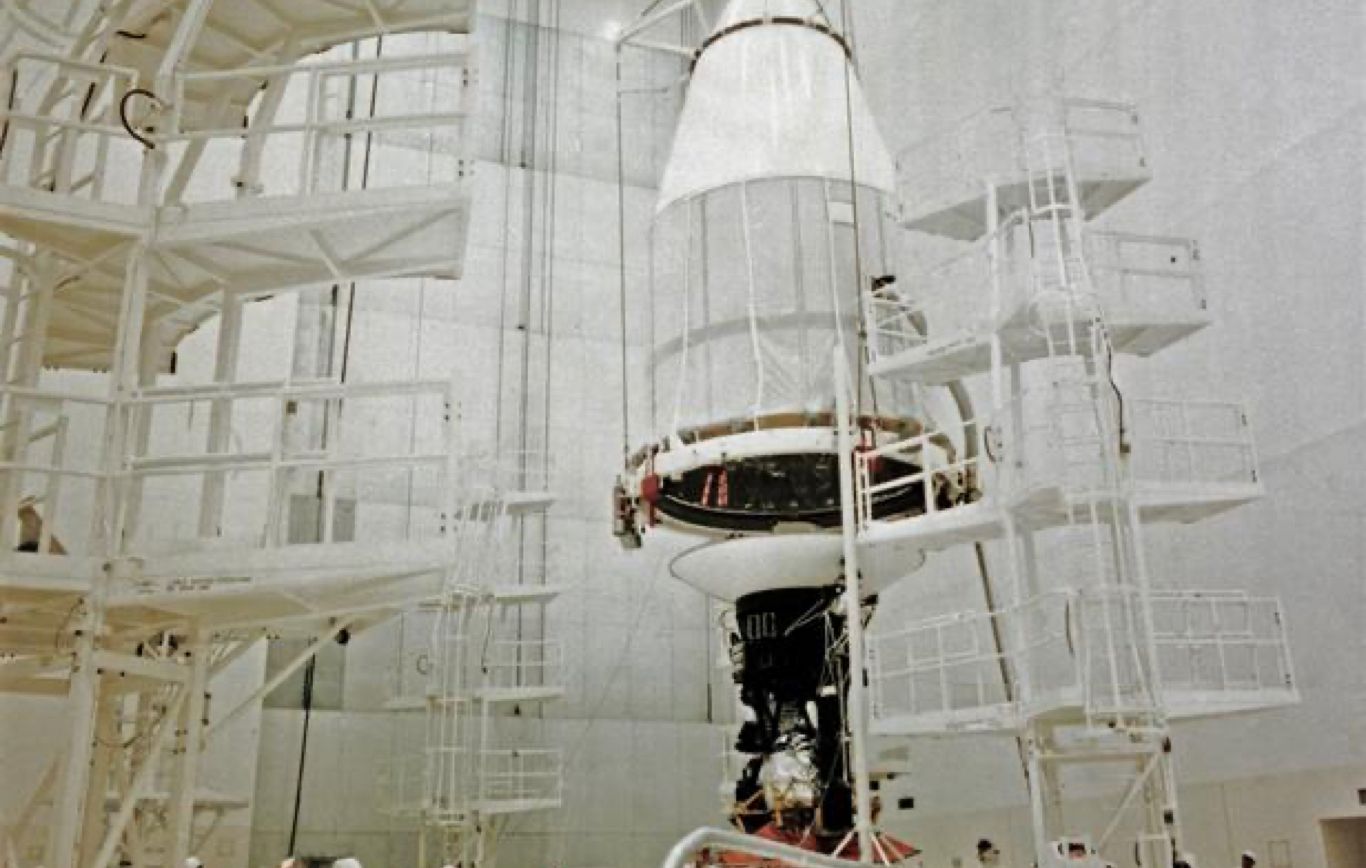5 May 2023
Government and industry must inspire about the possibilities of New Space - Space News Roundup

(Image:Adobe)
There has been much to celebrate so far this year in the space industry. Relativity Space demonstrated the feasibility of 3D-printed rockets, SpaceX’s first Starship launch gathered more success than assumed, iSpace (despite a hard landing) delivered a commercial lander to the lunar surface and Lockheed Martin are underway with demonstrating the technology capable of servicing satellites in-orbit. These are the technologies that will unlock a prosperous future in space.
However, is it truly conveyed to the public just how this technology will help humankind and the planet? Amidst a global crisis spurred on by deteriorating international relations, space is also being presented as another theatre of warfare. Furthermore, New Space is often reported as being the playground of the elite, and there are increasing concerns about the environmental impact of rocket launches. Of course, the industry is not perfect, and these are pressing issues that need to be confronted.
However, as the industry tries to keep up the pace and move forwards, they may find it necessary to also inspire people about the opportunities that lay ahead. For example, technologies such as space-based solar power, space mining and in-space manufacturing have the potential to help our planet and and answer our long-term needs for precious resources. However, it may become more difficult to achieve these goals if New Space continues to garner such a poor reputation.
The threats are real and must be confronted
The threats that the industry faces are real. Satellite company Inmarsat last year released the results of their public survey of 20,000 people. When asked what the biggest concerns about the future of space, the top three were; space junk and collisions, polluting space and damaging the Earth’s atmosphere. This may not come as surprise during a time when people are witnessing the effects of climate change, and efforts are ever more focussed on sustainability.
Space X may also feel somewhat concerned about the outcome of their recent Starship launch, in this respect. On May 1st, it was reported that several environmental groups have filed lawsuits with the company regarding the credibility of the company’s environmental review carried out before the launch, arguing that the Federal Aviation Authority failed to thoroughly assess the potential damage to the environment, and that SpaceX’s launch license should be revoked. The U.S. Fish and Wildlife Service said that damage from the launch found debris flung over 385 acres and into nearby Boca Chica State Park, as well as cause a 3.5 acre wildfire. Companies such as SpaceX may be well aware that some damage will inevitably be caused through developing and using rockets, but they’ll also need to wary about the damage caused to their reputation and that of the industry.
As well as environmental concerns, we continue to see space and geopolitical conflict become increasingly intertwined, in particular in relation to the growing rivalry between the US and China. Last month, an annual space threat assessment, released by the Center for Strategic and International Studies, highlighted China as the biggest competitor of the US in developing space capabilities. Furthermore, an article this week from Military Times highlights that while no nations have conducted a kinetic physical attack on another nations satellites, the US, Russia, China and India have all tested anti-satellite (ASAT) weapons. Despite the US leading a UN motion to ban ASAT testing, amidst an atmosphere of skepticism they may find it difficult to get their adversaries onboard.
In perhaps more worrying news for the US this week, China is undergoing plans to modernise its People’s Liberation Army (PLA), with a focus on cybersecurity and space as they aim to increase recruitment in these areas. China is also continuing to rapidly catch up to the US and have announced details of their next generation rocket designed to take Taikonauts to the Moon. Leading Chinese lunar expert, Wu Weiren, stated that “By 2030, it is without a doubt possible for the Chinese to walk on the Moon. That is not a problem”. With the US Artemis project well underway, it seems we are once again witnessing a superpower race to the Moon.
Europe, perhaps noticing the potential outcomes of any conflict, are continuing on their path for non-dependence in Space. Head of ESA, Josef Aschbacher, said that they will continue to work closely with NASA, but also that they have to do more, saying that “Europe needs a wake-up call.” Europe are still struggling to establish their own access to space after severing ties with Russia, and are still awaiting the debut launch of Arianespace’s new Ariane-6 rocket. Europe’s quest to gain independent space access will be a positive development for its burgeoning rocket industry and reduce reliance on other partners and supply chains. However, it is also a sign of how conflict is now part of the space industry and is shaping relations within it.

Voyager 2 Encapsulation (Image: NASA/JPL-Caltech)
Inspire people in order to achieve success
Amidst these challenges it will be necessary to inspire people about the positive impact space has, and could have, on peoples’ lives and the planet. Firstly, we are seeing an industry that is providing economic opportunities, even during trying times. Europe’s quest for launch access is evidence of this, and one example is Spanish company PLD Space, who are set to launch their first Miura-1 rocket by the end of this month and will be the first reusable launch vehicle to be manufactured in Europe. Other European companies awaiting debut launches include Skyrora, Orbex, Isar Aerospace and Rocket Factory Augsburg.
UK-based in-space manufacturing company Space Forge are also showing signs of this economic stimulus and have signed a Memorandum of Understanding (MoU) with Australian launch provider, Southern Launch. The plan aims to look into the possibilities of satellite return technology to Southern Launch’s Koonibba Test Range. Space Forge’s ForgeStar vehicle will be designed to manufacture super materials in space, and be capable of reentry. Such technology is seen as being beneficial for the production of materials such as those needed for semiconductors, producing stem cells and human tissue, due to the benefits of zero-gravity conditions. The two companies are aiming to announce a joint mission before the end of the year.
Hoping to provide not only a boost, but a significant milestone for the industry and space exploration as a while, Elon Musk has announced that SpaceX may be ready for a second Starship launch within as little as 6 to 8 weeks, and says that the first launch slightly exceeded his expectations. While some environmental concerns exist surrounding the launch of Starship, its eventual success and iconic reusability could inspire a new generation about our future in space. Starship and its massively increased payload capacity will be used for a number of applications; carrying large numbers of vehicles into obit, taking crews to the surface of the Moon and opening-up the possibilities of interplanetary travel.
Maybe one of the most iconic space missions to date is that of the Voyager probes, sent by NASA in 1977. For 45 years Voyager-2 has been relaying data back to Earth, and NASA scientists have announced that they have found a way to keep the probe going, without shutting down scientific instruments, and keep them functional until 2026. Both probes have left the Sun’s heliosphere and are traversing through the interstellar medium, beyond the the solar system.
It will be perhaps through these feats, such as that of the Voyager probes, that governments and industries will persuade the public about the success we have already had, and the successes that lay ahead. As we can see, there is also much to be concerned about, whether it be those surrounding the environmental damage caused by launches, or the threat of conflict being dragged into space. These issues must be presented as problems to solve, and contrasted with the success that awaits us.
External Links
This Week
*News articles posted here are not property of ANASDA GmbH and belong to their respected owners. Postings here are external links only.
Our future in space

(Image:Adobe)
5 May 2023
Government and industry must inspire about the possibilities of New Space - Space News Roundup
There has been much to celebrate so far this year in the space industry. Relativity Space demonstrated the feasibility of 3D-printed rockets, SpaceX’s first Starship launch gathered more success than assumed, iSpace (despite a hard landing) delivered a commercial lander to the lunar surface and Lockheed Martin are underway with demonstrating the technology capable of servicing satellites in-orbit. These are the technologies that will unlock a prosperous future in space.
However, is it truly conveyed to the public just how this technology will help humankind and the planet? Amidst a global crisis spurred on by deteriorating international relations, space is also being presented as another theatre of warfare. Furthermore, New Space is often reported as being the playground of the elite, and there are increasing concerns about the environmental impact of rocket launches. Of course, the industry is not perfect, and these are pressing issues that need to be confronted.
However, as the industry tries to keep up the pace and move forwards, they may find it necessary to also inspire people about the opportunities that lay ahead. For example, technologies such as space-based solar power, space mining and in-space manufacturing have the potential to help our planet and and answer our long-term needs for precious resources. However, it may become more difficult to achieve these goals if New Space continues to garner such a poor reputation.
The threats are real and must be confronted
The threats that the industry faces are real. Satellite company Inmarsat last year released the results of their public survey of 20,000 people. When asked what the biggest concerns about the future of space, the top three were; space junk and collisions, polluting space and damaging the Earth’s atmosphere. This may not come as surprise during a time when people are witnessing the effects of climate change, and efforts are ever more focussed on sustainability.
Space X may also feel somewhat concerned about the outcome of their recent Starship launch, in this respect. On May 1st, it was reported that several environmental groups have filed lawsuits with the company regarding the credibility of the company’s environmental review carried out before the launch, arguing that the Federal Aviation Authority failed to thoroughly assess the potential damage to the environment, and that SpaceX’s launch license should be revoked. The U.S. Fish and Wildlife Service said that damage from the launch found debris flung over 385 acres and into nearby Boca Chica State Park, as well as cause a 3.5 acre wildfire. Companies such as SpaceX may be well aware that some damage will inevitably be caused through developing and using rockets, but they’ll also need to wary about the damage caused to their reputation and that of the industry.
As well as environmental concerns, we continue to see space and geopolitical conflict become increasingly intertwined, in particular in relation to the growing rivalry between the US and China. Last month, an annual space threat assessment, released by the Center for Strategic and International Studies, highlighted China as the biggest competitor of the US in developing space capabilities. Furthermore, an article this week from Military Times highlights that while no nations have conducted a kinetic physical attack on another nations satellites, the US, Russia, China and India have all tested anti-satellite (ASAT) weapons. Despite the US leading a UN motion to ban ASAT testing, amidst an atmosphere of skepticism they may find it difficult to get their adversaries onboard.
In perhaps more worrying news for the US this week, China is undergoing plans to modernise its People’s Liberation Army (PLA), with a focus on cybersecurity and space as they aim to increase recruitment in these areas. China is also continuing to rapidly catch up to the US and have announced details of their next generation rocket designed to take Taikonauts to the Moon. Leading Chinese lunar expert, Wu Weiren, stated that “By 2030, it is without a doubt possible for the Chinese to walk on the Moon. That is not a problem”. With the US Artemis project well underway, it seems we are once again witnessing a superpower race to the Moon.
Europe, perhaps noticing the potential outcomes of any conflict, are continuing on their path for non-dependence in Space. Head of ESA, Josef Aschbacher, said that they will continue to work closely with NASA, but also that they have to do more, saying that “Europe needs a wake-up call.” Europe are still struggling to establish their own access to space after severing ties with Russia, and are still awaiting the debut launch of Arianespace’s new Ariane-6 rocket. Europe’s quest to gain independent space access will be a positive development for its burgeoning rocket industry and reduce reliance on other partners and supply chains. However, it is also a sign of how conflict is now part of the space industry and is shaping relations within it.

Voyager 2 Encapsulation (Image: NASA/JPL-Caltech)
Inspire people in order to achieve success
Amidst these challenges it will be necessary to inspire people about the positive impact space has, and could have, on peoples’ lives and the planet. Firstly, we are seeing an industry that is providing economic opportunities, even during trying times. Europe’s quest for launch access is evidence of this, and one example is Spanish company PLD Space, who are set to launch their first Miura-1 rocket by the end of this month and will be the first reusable launch vehicle to be manufactured in Europe. Other European companies awaiting debut launches include Skyrora, Orbex, Isar Aerospace and Rocket Factory Augsburg.
UK-based in-space manufacturing company Space Forge are also showing signs of this economic stimulus and have signed a Memorandum of Understanding (MoU) with Australian launch provider, Southern Launch. The plan aims to look into the possibilities of satellite return technology to Southern Launch’s Koonibba Test Range. Space Forge’s ForgeStar vehicle will be designed to manufacture super materials in space, and be capable of reentry. Such technology is seen as being beneficial for the production of materials such as those needed for semiconductors, producing stem cells and human tissue, due to the benefits of zero-gravity conditions. The two companies are aiming to announce a joint mission before the end of the year.
Hoping to provide not only a boost, but a significant milestone for the industry and space exploration as a while, Elon Musk has announced that SpaceX may be ready for a second Starship launch within as little as 6 to 8 weeks, and says that the first launch slightly exceeded his expectations. While some environmental concerns exist surrounding the launch of Starship, its eventual success and iconic reusability could inspire a new generation about our future in space. Starship and its massively increased payload capacity will be used for a number of applications; carrying large numbers of vehicles into obit, taking crews to the surface of the Moon and opening-up the possibilities of interplanetary travel.
Maybe one of the most iconic space missions to date is that of the Voyager probes, sent by NASA in 1977. For 45 years Voyager-2 has been relaying data back to Earth, and NASA scientists have announced that they have found a way to keep the probe going, without shutting down scientific instruments, and keep them functional until 2026. Both probes have left the Sun’s heliosphere and are traversing through the interstellar medium, beyond the the solar system.
It will be perhaps through these feats, such as that of the Voyager probes, that governments and industries will persuade the public about the success we have already had, and the successes that lay ahead. As we can see, there is also much to be concerned about, whether it be those surrounding the environmental damage caused by launches, or the threat of conflict being dragged into space. These issues must be presented as problems to solve, and contrasted with the success that awaits us.
Share this article
External Links
This Week
*News articles posted here are not property of ANASDA GmbH and belong to their respected owners. Postings here are external links only.
5 May 2023
Government and industry must inspire about the possibilities of New Space - Space News Roundup

(Image:Adobe)
There has been much to celebrate so far this year in the space industry. Relativity Space demonstrated the feasibility of 3D-printed rockets, SpaceX’s first Starship launch gathered more success than assumed, iSpace (despite a hard landing) delivered a commercial lander to the lunar surface and Lockheed Martin are underway with demonstrating the technology capable of servicing satellites in-orbit. These are the technologies that will unlock a prosperous future in space.
However, is it truly conveyed to the public just how this technology will help humankind and the planet? Amidst a global crisis spurred on by deteriorating international relations, space is also being presented as another theatre of warfare. Furthermore, New Space is often reported as being the playground of the elite, and there are increasing concerns about the environmental impact of rocket launches. Of course, the industry is not perfect, and these are pressing issues that need to be confronted.
However, as the industry tries to keep up the pace and move forwards, they may find it necessary to also inspire people about the opportunities that lay ahead. For example, technologies such as space-based solar power, space mining and in-space manufacturing have the potential to help our planet and and answer our long-term needs for precious resources. However, it may become more difficult to achieve these goals if New Space continues to garner such a poor reputation.
The threats are real and must be confronted
The threats that the industry faces are real. Satellite company Inmarsat last year released the results of their public survey of 20,000 people. When asked what the biggest concerns about the future of space, the top three were; space junk and collisions, polluting space and damaging the Earth’s atmosphere. This may not come as surprise during a time when people are witnessing the effects of climate change, and efforts are ever more focussed on sustainability.
Space X may also feel somewhat concerned about the outcome of their recent Starship launch, in this respect. On May 1st, it was reported that several environmental groups have filed lawsuits with the company regarding the credibility of the company’s environmental review carried out before the launch, arguing that the Federal Aviation Authority failed to thoroughly assess the potential damage to the environment, and that SpaceX’s launch license should be revoked. The U.S. Fish and Wildlife Service said that damage from the launch found debris flung over 385 acres and into nearby Boca Chica State Park, as well as cause a 3.5 acre wildfire. Companies such as SpaceX may be well aware that some damage will inevitably be caused through developing and using rockets, but they’ll also need to wary about the damage caused to their reputation and that of the industry.
As well as environmental concerns, we continue to see space and geopolitical conflict become increasingly intertwined, in particular in relation to the growing rivalry between the US and China. Last month, an annual space threat assessment, released by the Center for Strategic and International Studies, highlighted China as the biggest competitor of the US in developing space capabilities. Furthermore, an article this week from Military Times highlights that while no nations have conducted a kinetic physical attack on another nations satellites, the US, Russia, China and India have all tested anti-satellite (ASAT) weapons. Despite the US leading a UN motion to ban ASAT testing, amidst an atmosphere of skepticism they may find it difficult to get their adversaries onboard.
In perhaps more worrying news for the US this week, China is undergoing plans to modernise its People’s Liberation Army (PLA), with a focus on cybersecurity and space as they aim to increase recruitment in these areas. China is also continuing to rapidly catch up to the US and have announced details of their next generation rocket designed to take Taikonauts to the Moon. Leading Chinese lunar expert, Wu Weiren, stated that “By 2030, it is without a doubt possible for the Chinese to walk on the Moon. That is not a problem”. With the US Artemis project well underway, it seems we are once again witnessing a superpower race to the Moon.
Europe, perhaps noticing the potential outcomes of any conflict, are continuing on their path for non-dependence in Space. Head of ESA, Josef Aschbacher, said that they will continue to work closely with NASA, but also that they have to do more, saying that “Europe needs a wake-up call.” Europe are still struggling to establish their own access to space after severing ties with Russia, and are still awaiting the debut launch of Arianespace’s new Ariane-6 rocket. Europe’s quest to gain independent space access will be a positive development for its burgeoning rocket industry and reduce reliance on other partners and supply chains. However, it is also a sign of how conflict is now part of the space industry and is shaping relations within it.

Voyager 2 Encapsulation (Image: NASA/JPL-Caltech)
Inspire people in order to achieve success
Amidst these challenges it will be necessary to inspire people about the positive impact space has, and could have, on peoples’ lives and the planet. Firstly, we are seeing an industry that is providing economic opportunities, even during trying times. Europe’s quest for launch access is evidence of this, and one example is Spanish company PLD Space, who are set to launch their first Miura-1 rocket by the end of this month and will be the first reusable launch vehicle to be manufactured in Europe. Other European companies awaiting debut launches include Skyrora, Orbex, Isar Aerospace and Rocket Factory Augsburg.
UK-based in-space manufacturing company Space Forge are also showing signs of this economic stimulus and have signed a Memorandum of Understanding (MoU) with Australian launch provider, Southern Launch. The plan aims to look into the possibilities of satellite return technology to Southern Launch’s Koonibba Test Range. Space Forge’s ForgeStar vehicle will be designed to manufacture super materials in space, and be capable of reentry. Such technology is seen as being beneficial for the production of materials such as those needed for semiconductors, producing stem cells and human tissue, due to the benefits of zero-gravity conditions. The two companies are aiming to announce a joint mission before the end of the year.
Hoping to provide not only a boost, but a significant milestone for the industry and space exploration as a while, Elon Musk has announced that SpaceX may be ready for a second Starship launch within as little as 6 to 8 weeks, and says that the first launch slightly exceeded his expectations. While some environmental concerns exist surrounding the launch of Starship, its eventual success and iconic reusability could inspire a new generation about our future in space. Starship and its massively increased payload capacity will be used for a number of applications; carrying large numbers of vehicles into obit, taking crews to the surface of the Moon and opening-up the possibilities of interplanetary travel.
Maybe one of the most iconic space missions to date is that of the Voyager probes, sent by NASA in 1977. For 45 years Voyager-2 has been relaying data back to Earth, and NASA scientists have announced that they have found a way to keep the probe going, without shutting down scientific instruments, and keep them functional until 2026. Both probes have left the Sun’s heliosphere and are traversing through the interstellar medium, beyond the the solar system.
It will be perhaps through these feats, such as that of the Voyager probes, that governments and industries will persuade the public about the success we have already had, and the successes that lay ahead. As we can see, there is also much to be concerned about, whether it be those surrounding the environmental damage caused by launches, or the threat of conflict being dragged into space. These issues must be presented as problems to solve, and contrasted with the success that awaits us.
Share this article
External Links
This Week
*News articles posted here are not property of ANASDA GmbH and belong to their respected owners. Postings here are external links only.


























